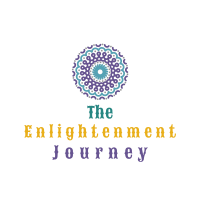Simple Mindfulness Exercises to Reduce Stress

Before diving in, please note: This post is for informational purposes only. If you’d like to know more about how we approach topics, feel free to check out our friendly Disclaimer Page.
Hey there, amazing readers! 🖐️ Just a quick note: yes, we know there are a lot of ads here. Trust us, we get it—it’s not the prettiest look, but they help us keep this blog alive and kicking. Those pesky little ads cover the costs of all the behind-the-scenes magic, from hosting and tech stuff to creating content we hope you’ll love.
We’re committed to delivering quality posts, and your support (even just sticking around despite the ads) means everything to us. So, bear with us, and thanks for helping us keep the good vibes rolling. Now, on to the fun stuff! 😉
TRANSLATE BUTTON AT THE END OF THE ARTICLE
Mindfulness is the practice of being fully present and engaged in the moment, which can significantly reduce stress and improve overall well-being.
By focusing on the here and now, you can cultivate a sense of calm and clarity.
Incorporating simple mindfulness exercises into your daily routine can help you manage stress more effectively.
Here’s a guide to some easy mindfulness exercises that can help you relax and find peace amidst the chaos of daily life.
1. Deep Breathing
Deep breathing is a fundamental mindfulness exercise that helps calm the nervous system and reduce stress.
How to Practice:
Find a Comfortable Position: Sit or lie down in a comfortable position.
Close Your Eyes: Gently close your eyes to minimize distractions.
Inhale Slowly: Breathe in deeply through your nose, counting to four as you fill your lungs with air.
Hold Your Breath: Hold your breath for a count of four.
Exhale Slowly: Exhale slowly through your mouth for a count of six.
Repeat: Continue this process for a few minutes, focusing on the sensation of your breath.
2. Body Scan
Body scan meditation helps you become aware of physical sensations and release tension.
How to Practice:
Lie Down Comfortably: Lie on your back with your arms at your sides.
Focus on Each Body Part: Start at your toes and gradually move up to your head.
Focus on each part of your body, noticing any sensations, tension, or discomfort.
Breathe Into Areas of Tension: If you find any areas of tension, breathe into them and imagine the tension melting away.
Release Tension: As you breathe, visualize the tension leaving your body.
3. Mindful Eating
Mindful eating involves paying full attention to the experience of eating, which can enhance enjoyment and reduce stress.
How to Practice:
Choose a Small Meal or Snack: Select a simple food item like a piece of fruit or a small snack.
Observe the Food: Take a moment to observe the color, texture, and aroma of the food.
Take Small Bites: Eat slowly, taking small bites and chewing thoroughly.
Savor the Flavors: Focus on the taste and texture of the food, savoring each bite.
Notice Satiety: Pay attention to how your body feels as you eat, noting when you begin to feel full.
4. Mindful Walking
Mindful walking is a practice that combines movement with mindfulness, allowing you to connect with the present moment.
How to Practice:
Find a Quiet Place: Choose a quiet area where you can walk without distractions.
Walk Slowly: Begin walking at a slow, deliberate pace.
Focus on Your Steps: Pay attention to the sensation of your feet touching the ground with each step.
Notice Your Surroundings: Observe your environment, noticing sights, sounds, and smells as you walk.
Breathe: Maintain a steady breath, coordinating it with your steps if possible.
5. Guided Imagery
Guided imagery involves using mental visualization to create a peaceful and calming experience.
How to Practice:
Find a Quiet Space: Sit or lie down in a comfortable position.
Discover "SUPERFOODS: The Key to Health and Balance🥗" 🌿🌺
Close Your Eyes: Close your eyes to help focus inward.
Visualize a Calm Place: Imagine a peaceful scene, such as a beach, forest, or meadow.
Picture the details vividly, including sights, sounds, and smells.
Immerse Yourself: Imagine yourself fully immersed in this peaceful environment, experiencing the tranquility it offers.
Stay in the Moment: Spend a few minutes in this mental imagery, allowing yourself to feel calm and relaxed.
6. Loving-Kindness Meditation
Loving-kindness meditation focuses on generating positive feelings towards yourself and others.
How to Practice:
Sit Comfortably: Find a comfortable seated position.
Close Your Eyes: Close your eyes and take a few deep breaths.
Repeat Phrases: Silently repeat phrases like “May I be happy,” “May I be healthy,” and “May I be at peace.”
Extend Wishes to Others: Gradually extend these wishes to others, including loved ones, acquaintances, and even those with whom you have conflicts.
Feel the Warmth: Allow yourself to feel warmth and compassion as you extend these wishes.
7. Gratitude Practice
Gratitude practice involves reflecting on things you are thankful for, which can shift your focus away from stress and negativity.
How to Practice:
Set Aside Time: Choose a time each day to practice gratitude, such as in the morning or before bed.
Reflect on Your Day: Think about specific things you are grateful for, such as positive experiences, supportive people, or personal achievements.
Write It Down: Consider keeping a gratitude journal where you write down three things you are thankful for each day.
Feel Appreciation: Allow yourself to fully feel and appreciate the positive aspects of your life.
8. Progressive Muscle Relaxation
Progressive muscle relaxation helps release physical tension by systematically tensing and relaxing different muscle groups.
How to Practice:
Lie Down Comfortably: Lie on your back or sit comfortably.
Tense Muscle Groups: Start with your feet and work your way up to your head.
Tense each muscle group (feet, legs, abdomen, arms, face) for about five seconds.
Release and Relax: After tensing, release the muscle group and focus on the sensation of relaxation.
Move Upward: Continue this process, moving up through each muscle group until you reach your head.
9. Breathing with Visualization
Breathing with visualization combines deep breathing with mental imagery to enhance relaxation.
How to Practice:
Sit or Lie Down: Find a comfortable position.
Close Your Eyes: Close your eyes to help focus.
Inhale and Visualize: As you inhale, visualize a calming color or light filling your body.
Exhale Tension: As you exhale, imagine stress and tension leaving your body in the form of dark smoke or another visual representation.
Repeat: Continue this process for several minutes, allowing the calming image to deepen your relaxation.
10. Mindful Listening
Mindful listening involves fully focusing on sounds, which can help ground you in the present moment.
How to Practice:
Find a Quiet Space: Choose a quiet environment to minimize distractions.
Close Your Eyes: Close your eyes to enhance your listening experience.
Focus on Sounds: Pay attention to the sounds around you, such as birds chirping, wind blowing, or distant traffic.
Avoid Judging: Simply observe the sounds without judgment or labeling them.
Let Sounds Flow: Allow the sounds to flow through you, helping to center your focus and calm your mind.
Conclusion
Incorporating these simple mindfulness exercises into your daily routine can significantly reduce stress and improve your overall sense of well-being.
Discover "Sports Nutrition: The Importance of Nutrition and Exercise for Overall Health 🥗🏋️"
Whether you choose deep breathing, mindful eating, or progressive muscle relaxation, the key is to find practices that resonate with you and fit into your lifestyle.
Regular mindfulness practice can help you develop greater awareness, enhance emotional resilience, and create a more balanced and peaceful life.
By making mindfulness a part of your everyday routine, you can better manage stress and cultivate a more serene and fulfilling existence.

The Enlightenment Journey is a remarkable collection of writings authored by a distinguished group of experts in the fields of spirituality, new age, and esoteric knowledge.
This anthology features a diverse assembly of well-experienced authors who bring their profound insights and credible perspectives to the forefront.
Each contributor possesses a wealth of knowledge and wisdom, making them authorities in their respective domains.
Together, they offer readers a transformative journey into the realms of spiritual growth, self-discovery, and esoteric enlightenment.
The Enlightenment Journey is a testament to the collective expertise of these luminaries, providing readers with a rich tapestry of ideas and information to illuminate their spiritual path.
Our Diverse Expertise 🌟
While our primary focus is on spirituality and esotericism, we are equally passionate about exploring a wide range of other topics and niches 🌍📚. Our experienced team is dedicated to delivering high-quality, informative content across various subjects ✨.
To ensure we provide the most accurate and valuable insights, we collaborate with trusted experts in their respective domains 🧑🏫👩🏫. This allows us to offer well-rounded perspectives and knowledge to our readers.
Our blog originally focused on spirituality and metaphysics, but we’ve since expanded to cover a wide range of niches. Don’t worry—we continue to publish a lot of articles on spirituality! Frequently visit our blog to explore our diverse content and stay tuned for more insightful reads.






